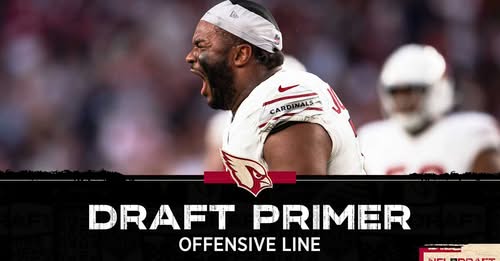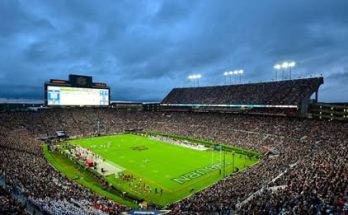In the aftermath of the free agency frenzy, fans and analysts alike have been dissecting the moves made—or rather, not made—by teams across the league. One glaring observation that continues to dominate conversations is the lack of attention given to the offensive line (OL) room by numerous franchises. While several teams opted to bolster their skill positions, shore up their defense, or acquire a veteran presence in key areas, the OL room remained surprisingly untouched. This has sparked debates and speculation about whether the upcoming draft will be the moment when front offices finally address the apparent need for depth and reinforcements in the trenches.
The offensive line is undoubtedly one of the most critical units on the field. It is the foundation upon which a successful offense is built, protecting the quarterback and creating lanes for the running game. Yet, despite the immense importance of this group, teams have seemingly adopted a wait-and-see approach during free agency. Instead of pursuing seasoned linemen or even versatile depth pieces, many franchises opted to either retain existing players or let linemen walk without much resistance. This cautious approach raises questions about how teams perceive the current OL talent pool and whether the draft is seen as a more viable option for addressing their needs.
One of the primary reasons behind the lack of movement could be the cost associated with veteran linemen. The market for top-tier offensive linemen has become increasingly competitive, with teams willing to shell out substantial contracts to secure elite talent. For many franchises operating under tight salary caps, committing significant resources to linemen can be a daunting proposition. This financial dynamic forces front offices to carefully weigh their priorities and sometimes settle for internal development rather than external acquisition.
Additionally, teams may have confidence in their current depth or the progression of younger players already on the roster. The offensive line is one of those units where chemistry and cohesion are paramount. Simply adding new pieces does not guarantee improvement, especially if the incoming player disrupts existing synergy. Some franchises have calculated that allowing younger linemen another year to develop may yield better results than bringing in a player who might not fit the system or scheme.
That said, the draft provides a more affordable and potentially sustainable method of building depth. With a strong offensive line class projected for this year, teams may be eyeing several prospects who can step in and contribute immediately or develop into long-term starters. While draft picks inherently come with risks—particularly at a position that often requires an adjustment period at the professional level—the potential upside often outweighs the cost.
Historically, some of the league’s best offensive lines have been built through the draft rather than free agency. Drafting linemen allows teams to mold players within their system from the start, building continuity and familiarity with their specific blocking schemes and techniques. Coaches can work directly with rookies to refine fundamentals and adapt to the speed and complexity of the NFL game, rather than trying to re-train veterans ingrained with habits from previous systems.
Furthermore, with rookie contracts being notably more affordable than veteran deals, teams can allocate resources to other areas of need while still investing in their offensive line. This financial flexibility becomes invaluable, especially for contenders who need to maximize every dollar to stay competitive.
However, relying solely on the draft to fortify the OL room is not without its challenges. Drafting offensive linemen is far from an exact science, and history is littered with can’t-miss prospects who failed to live up to expectations. The transition from college to the NFL often exposes flaws in technique, strength, and adaptability that were not apparent at the collegiate level. Even highly touted prospects can struggle when faced with NFL-caliber defensive linemen, leading to growing pains that can hinder offensive consistency.
Moreover, the pressure to hit on draft picks becomes amplified when free agency has already passed without addressing the need. Front offices will feel the weight of scrutiny if their draft selections do not pan out, particularly if the lack of proven depth becomes an issue during the season. Injuries, underperformance, or failure to gel as a unit could all compound the problem and lead to pointed questions from fans and media alike.
To mitigate this risk, some teams may still consider adding a veteran presence after the draft or during preseason cuts when salaries are more manageable. Veteran free agents who remain unsigned after the draft often come at a discounted rate, providing an opportunity to add experience without a long-term commitment. These late additions can serve as insurance policies should younger players struggle to acclimate or injuries strike unexpectedly.
In the end, the decision to forgo free agency additions in the OL room may prove prudent if the draft yields promising talent. Conversely, it could backfire if rookies do not develop as hoped or if injuries expose a lack of depth. The stakes are undeniably high, and the margin for error is razor-thin. Teams that navigate this process successfully will bolster their offensive line with fresh, capable talent while preserving financial flexibility. Those that miss the mark, however, could find their entire offense hampered by a vulnerable front line.
As draft day approaches, it will be fascinating to see how teams address their OL concerns. Will they prioritize early-round selections for surefire starters, or will they look to mid-to-late rounds for developmental prospects? The answer may very well shape the success of offenses across the league in the upcoming season. Regardless of the strategy, one thing is certain: the offensive line cannot be overlooked, and the consequences of neglecting it could reverberate throughout the season.



